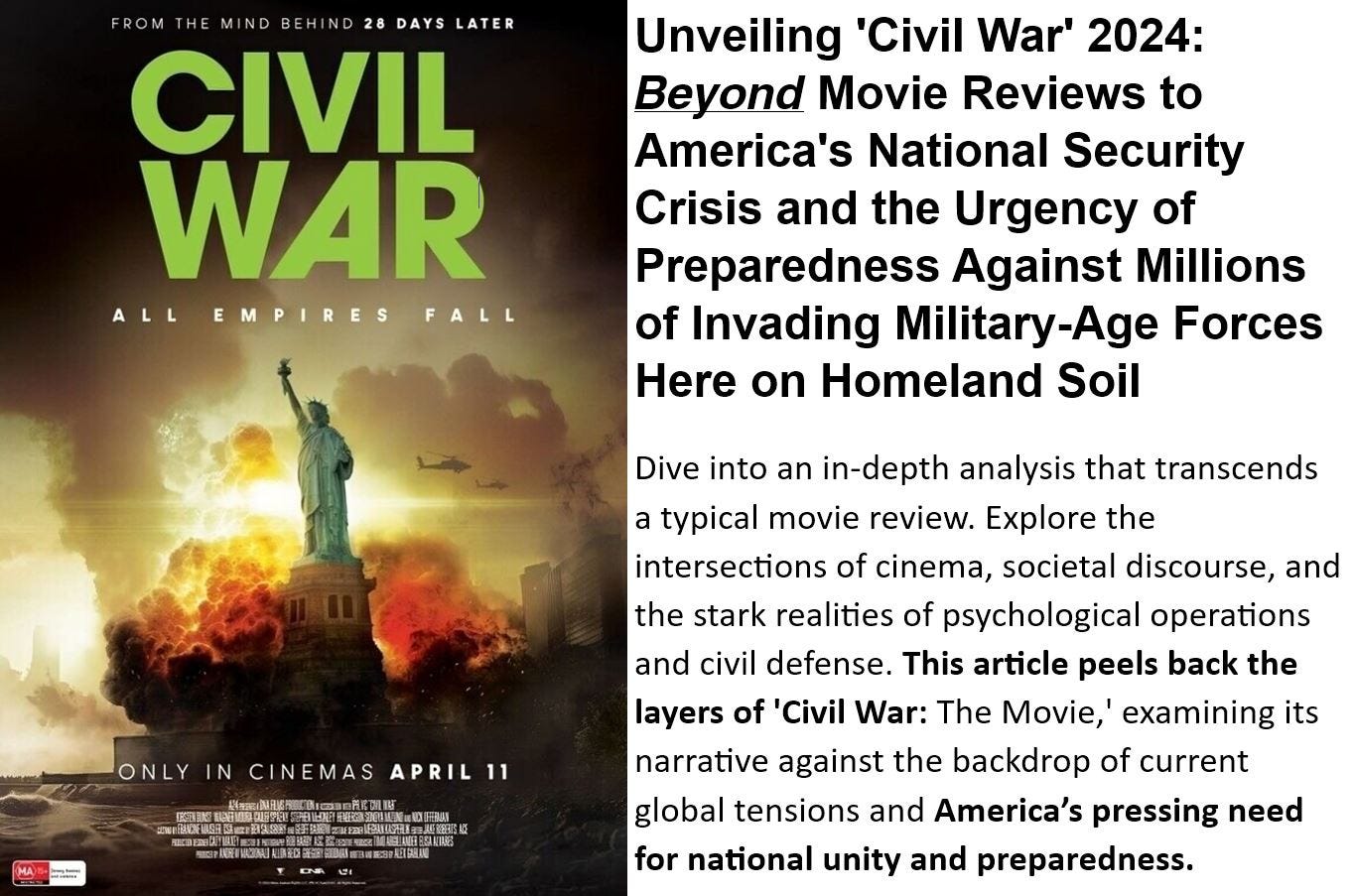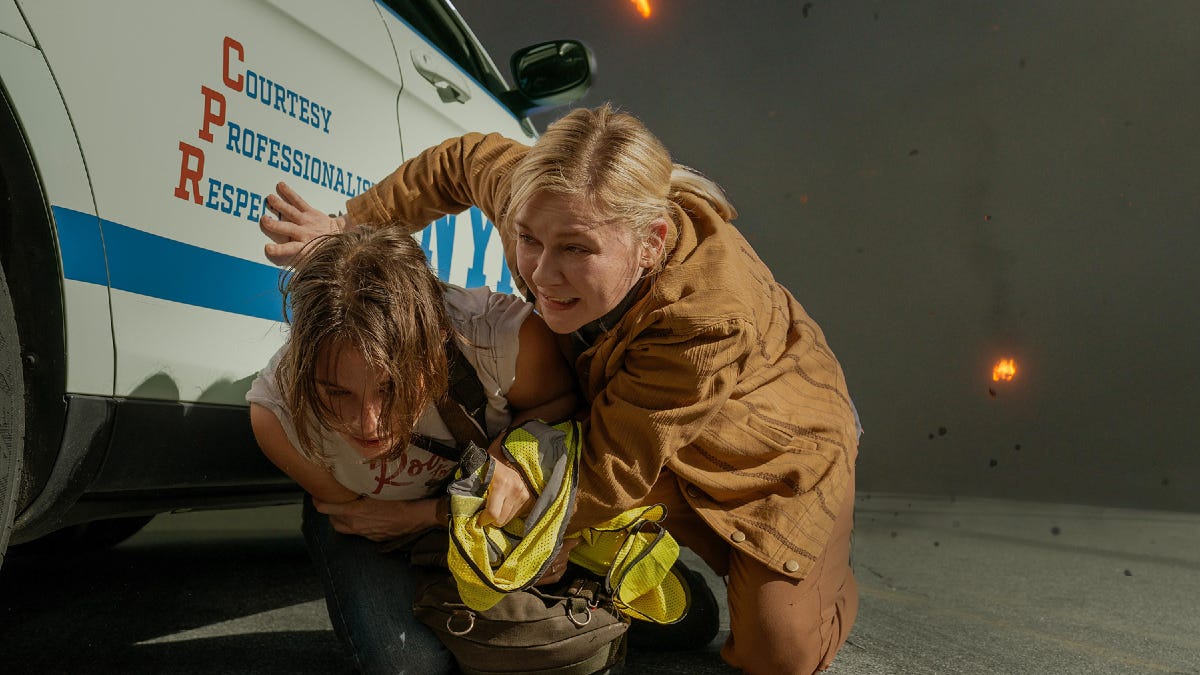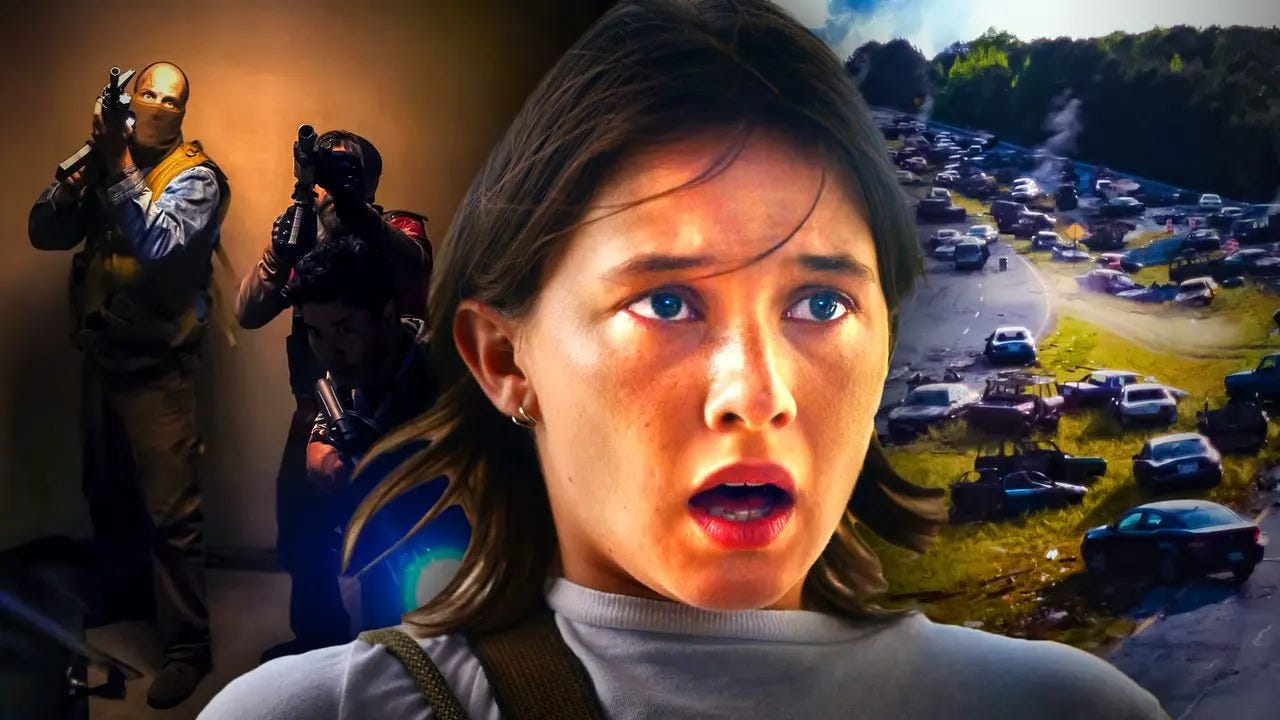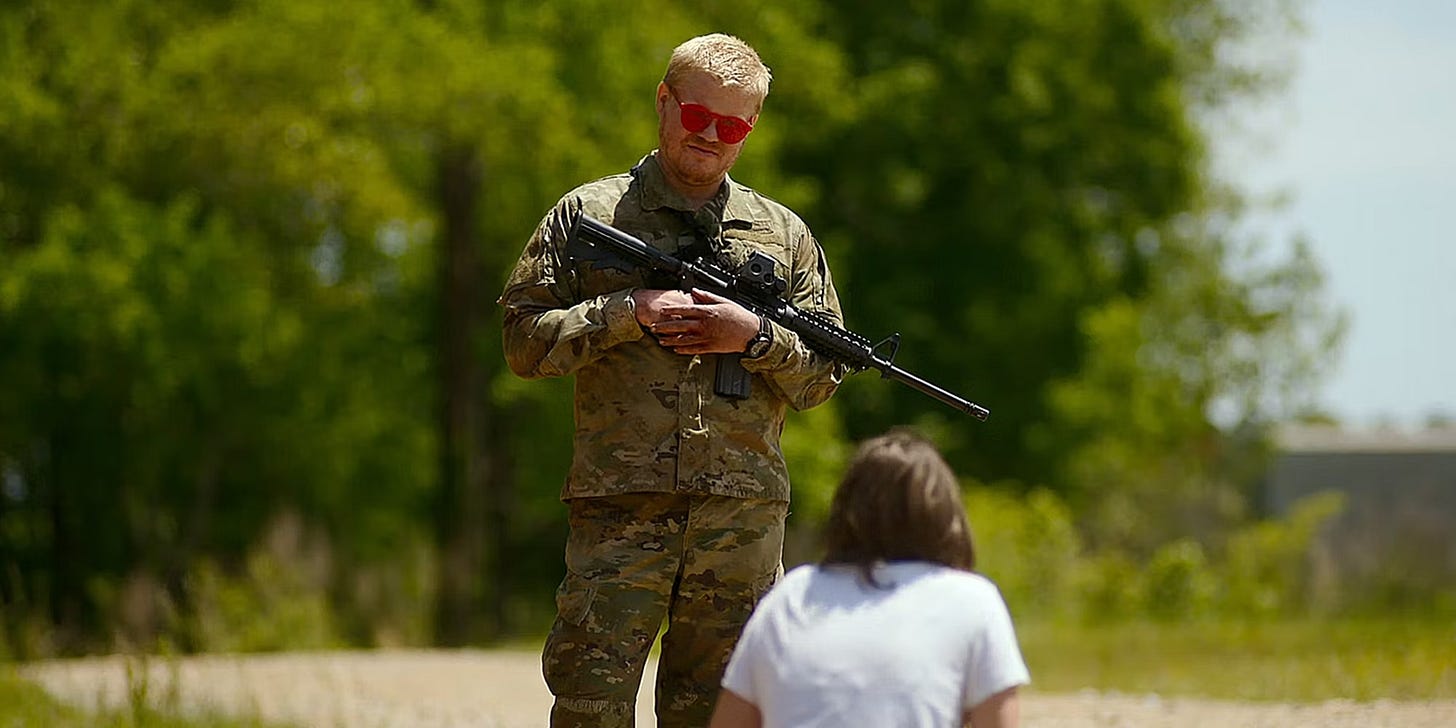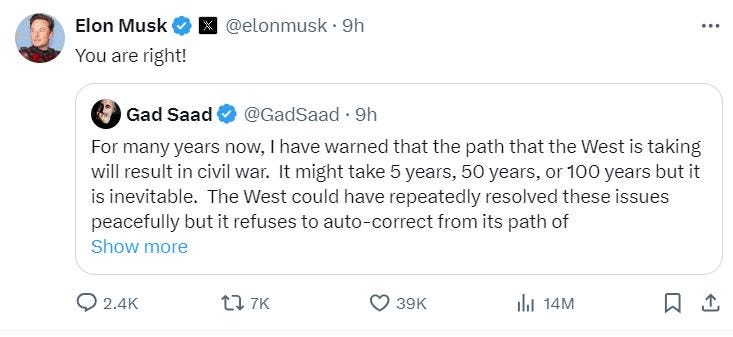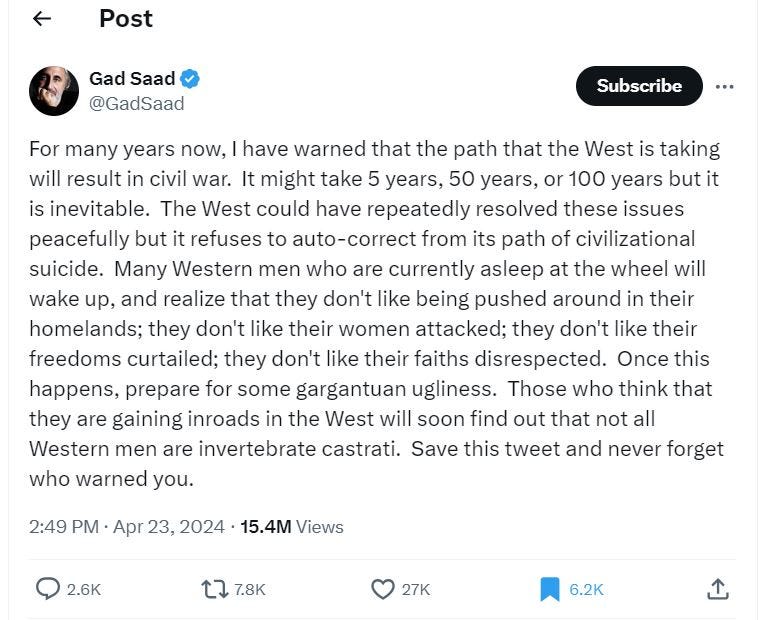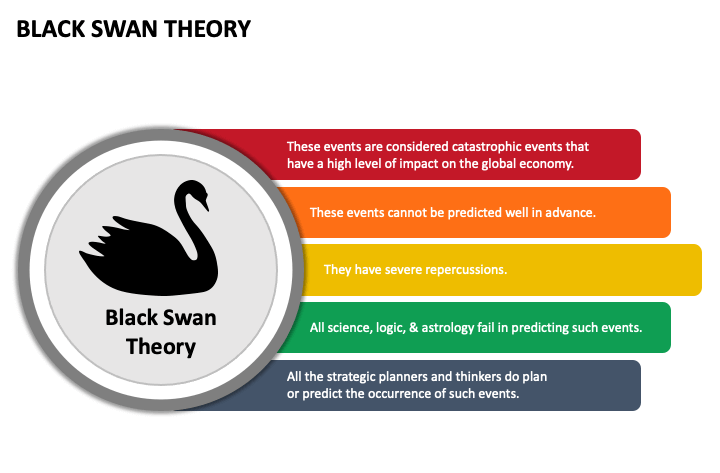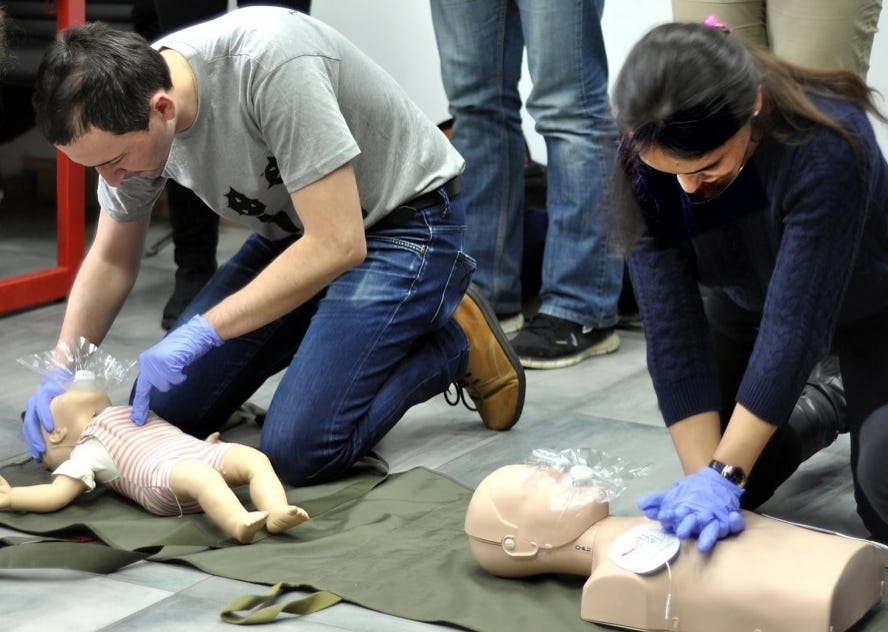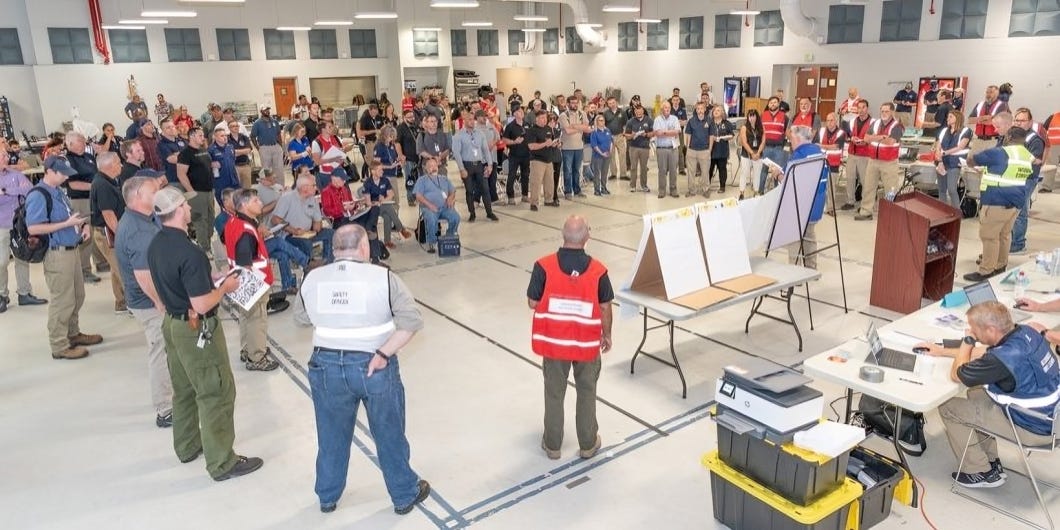CIVIL WAR The Movie: Was It More Than A Movie!?"
Peeling Back the Curtain: Propaganda, Perception, and the Power of Predictive Programming
INTRODUCTION
Before we delve into the depths of "Civil War: The Movie," let's take a moment for two brief announcements:
Our Official Launch: Sunrise to Sunset is set to launch officially from May 15th to May 30th, with interim articles to keep you engaged until then.
Must-Read Feature: Keep an eye out for a riveting article at Unite To Save America & Her Allies Journal, set to drop by the end of this week. It's a deep dive into pressing issues, informed by insiders with top-level government intel—perfectly complementing the themes of our current discussion.
"CIVIL WAR" 2024: A Cinematic Glimpse into Dystopia
As we prepare to explore the narrative of "Civil War: The Movie," take a moment to watch the extended trailer and familiarize yourself in the film's vision of America's future:
Critical Alert: Unraveling PsyOps in 'CIVIL WAR' Trailers 🚨 - Vigilance Required"
"Be discerning: While the full narrative of 'CIVIL WAR' may offer only subtle hints, its widely viewed trailer could be a more potent vehicle for Predictive Programming and Government Propaganda. Trailers can serve as powerful PsyOps tools—short for Psychological Operations, which are strategies used by governments to influence the perceptions and behaviors of other governments, organizations, and groups of people.
We encourage you to watch the 'CIVIL WAR' trailer and then view the film in its entirety. Observe the differences and nuances between the two and decide for yourself if you can detect elements of Predictive Programming or Government Propaganda. And just to be clear, we receive no kickbacks for this recommendation—we simply aim to foster a space for critical thought and discussion.” - Nadine
The film's portrayal of a nation on the brink of internal conflict has sparked a significant response from our community. The relevance of its themes to current societal discourse warrants a closer examination. Join me as we peel back the layers of this cinematic enigma and consider what it might be saying about our world today.
Back to 'Civil War' 2024: A Closer Look
The impetus for this deep dive came from a wave of curiosity from our community, captivated by the film's depiction of a potential civil war in America. Given its portrayal of domestic conflict on U.S. soil—remarkably the second such depiction this year—the film's relevance is undeniable and merits a deeper exploration. Join us as we embark on this analysis, which may just reveal more than the film's surface narrative suggests.
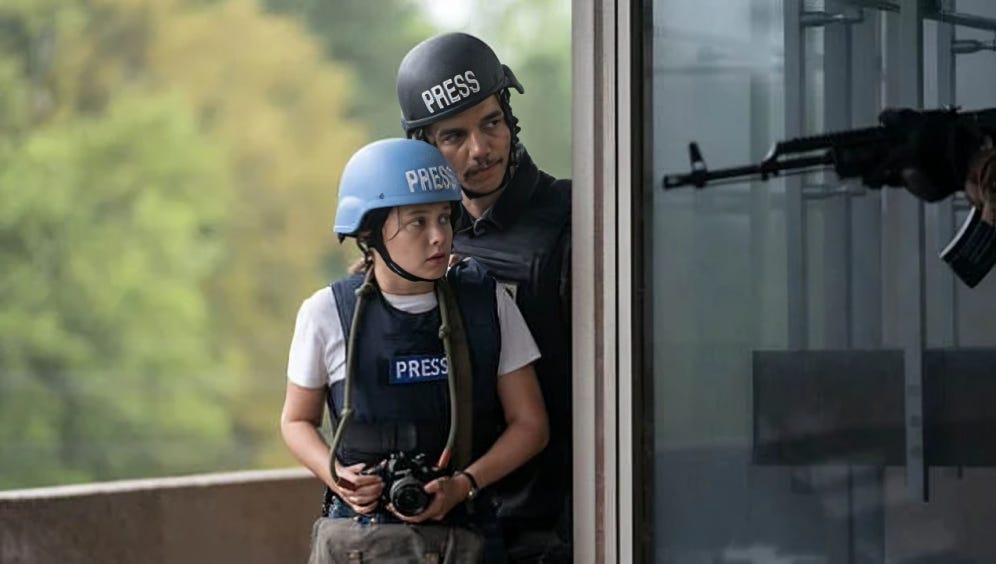
'Civil War': Decoding the Narrative
Both IMDB and Rotten Tomatoes describe "Civil War" similarly: "A journey across a dystopian future America, following a team of military-embedded journalists as they race against time to reach DC before rebel factions descend upon the White House." But is this all there is to the story, or is there a deeper narrative at play?
Plot Breakdown: 'Civil War' Unfolded
Directed by Alex Garland and featuring Kirsten Dunst, "Civil War" paints a grim picture of America in the throes of internal conflict.
The story follows Lee Smith, a seasoned war photographer, and Jessie Cullen, a budding photojournalist, as they navigate a country divided by war to capture the truth before it's too late.
Their journey to Washington, D.C. is fraught with danger, from sniper battles to militant captures, reflecting the chaos of a nation at war with itself.
Amidst this backdrop, Jessie's talent emerges, mentored by Lee's experienced eye. But as their quest leads them to the heart of the conflict, they're faced with the harsh realities of war and the ethical dilemmas of their craft.
"Civil War" probes deep into the psyche of its characters, exploring the weight of journalistic responsibility and the impact of war on the human spirit. It's a narrative that challenges viewers to consider the cost of truth in times of turmoil.
Voices from the Virtual Crowd: Reddit Weighs In
Reddit users have not shied away from expressing their varied takes on 'Civil War.' Here's a snapshot of the discourse:
"The film's depth doesn't match its marketing hype, leaving some viewers underwhelmed." –
"The aggressive marketing campaign is hard to miss, raising questions about the film's promotional strategy."
"Its portrayal of conflict in a familiar setting is jarring, challenging our desensitization to violence elsewhere."
"A simplistic 'Red vs Blue' narrative would miss the film's broader message, suggesting viewers look beyond surface-level tribalism."
"The film's creative choices aim for timelessness and logistical plausibility, sparking interest despite potential disbelief."
Decoding the Subtext: 'Civil War' and Its Reflection of Societal Tensions
In 'Civil War,' the dramatic climax centers on the 'Western Forces' states (California and Texas, an intentionally odd pairing) marching on Washington D.C., casting the president as a national adversary. This depiction prompts us to consider the film's subliminal messages and their influence on public sentiment.
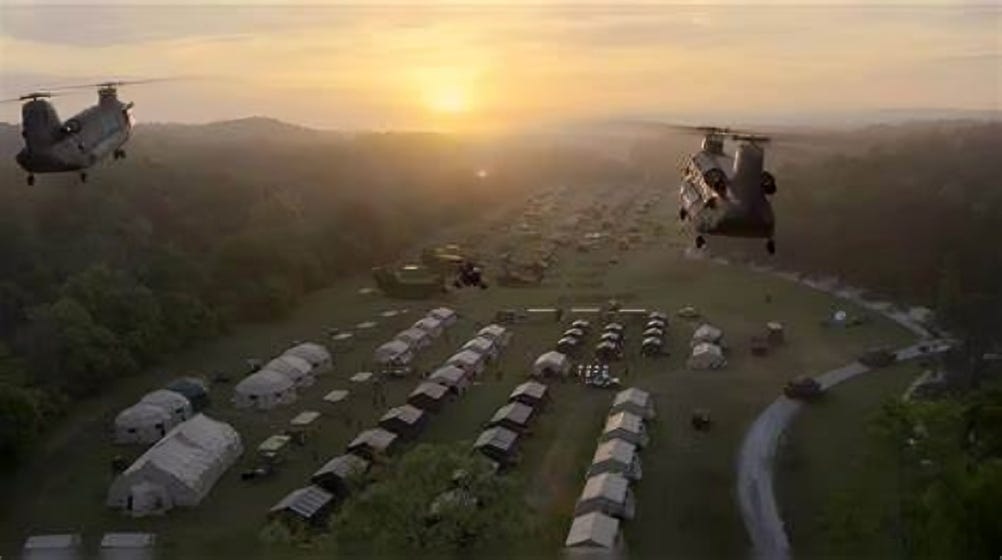
The alliance of California and Texas, two states with contrasting political landscapes, suggests a deeper commentary on unity against a common perceived threat. It challenges viewers to think about the circumstances under which such a coalition could form, and what it says about the divisions and potential for reconciliation within our society.
The film mirrors current political unease, echoing real-world debates over immigration, crime, economic woes, and electoral disputes. It invites viewers to ponder if the narrative endorses extreme measures against a leader seen as harmful to the nation.
Furthermore, the film's resolution—where citizens directly confront their leader—could be seen as legitimizing drastic interventions in the name of justice. Such portrayals risk fueling division and potentially radicalizing audiences.
As we dissect the narrative choices of 'Civil War,' we must ask ourselves: What are the filmmakers trying to say about the current state of the nation? Are they merely reflecting societal fears, or are they proposing a thought experiment on the power of unity in the face of divisive leadership?
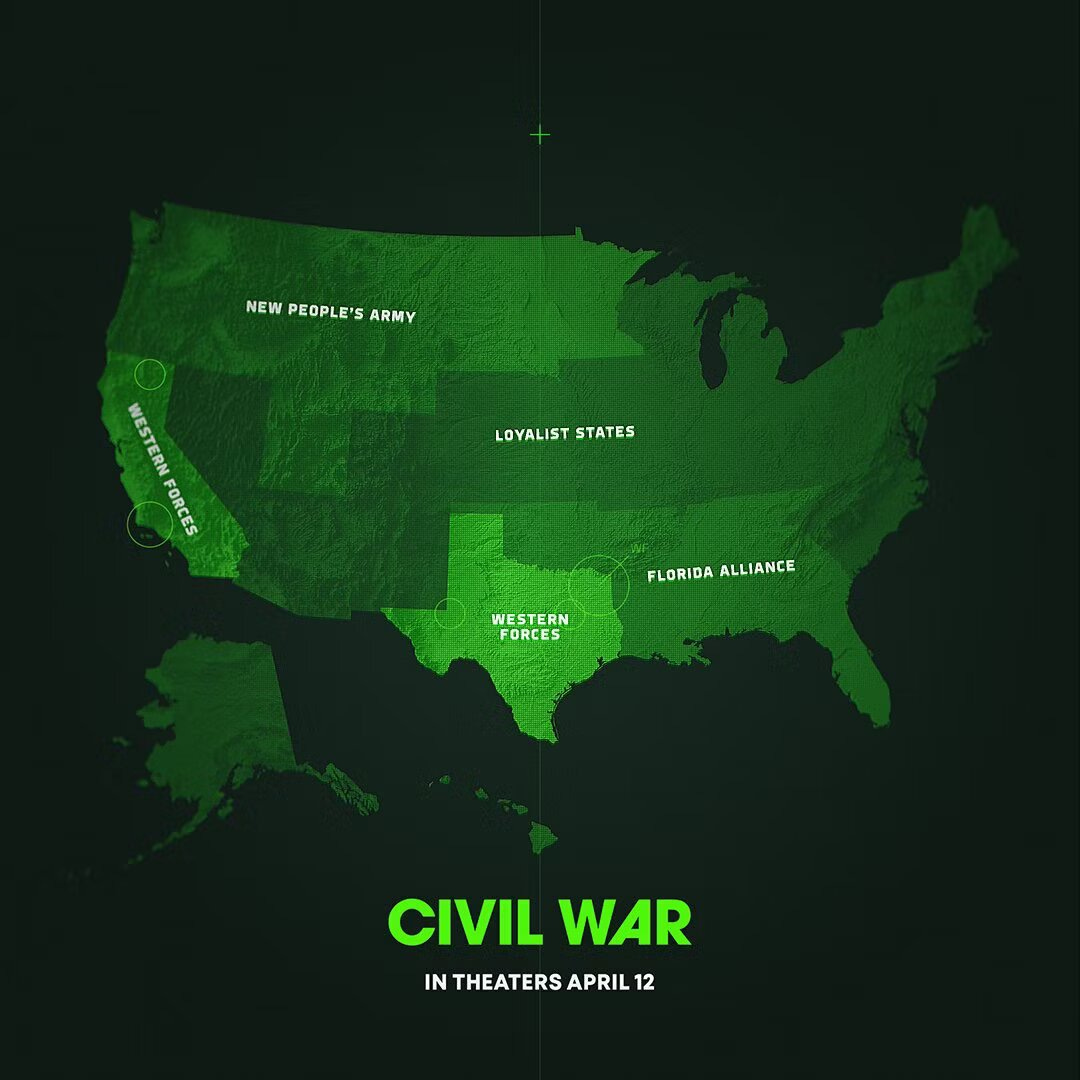
By exploring these questions, we can begin to unravel the complex tapestry of 'Civil War's' subtext and its resonance with the American psyche. The film becomes more than just entertainment; it serves as a mirror held up to the nation, reflecting the tumultuous political and social climate of our times.
From Reflection to Influence: The Power of Media Narratives
As we dissect the layers of "Civil War," we must also examine the broader implications of its narrative. Could the film be more than just entertainment? Might it be a tool for astroturfing, government propaganda, or even predictive programming? These concepts, which we'll explore shortly, highlight the need for vigilance in our media consumption.
The Mechanics of Influence: Astroturfing, Propaganda, and Programming
The film's themes may not exist in a vacuum. Instead, they could be part of larger efforts to mold public opinion or behavior. Whether by design or coincidence, such narratives have the potential to influence and divide.
Let's define the mechanisms that could be at play:
Astroturfing: This is the practice of creating a false sense of grassroots support. It's often orchestrated through deceptive tactics like fake social media profiles or paid endorsements to simulate genuine backing.

Government Propaganda: This is the spread of biased or misleading information by state entities. It's designed to shape public perception and can range from media campaigns to strategic speeches.
Predictive Programming: This controversial theory suggests that media content is used to subconsciously prime the public for future events or societal shifts, though evidence for this is often debated.
As we navigate the intersection of film and societal discourse, it's essential to question the origins and intentions of the media we consume. By understanding these concepts, we can better discern the potential impact of "Civil War" on our collective consciousness.
From Subtext to Influence: 'Civil War' Under the Microscope
Having explored the film's narrative and societal echoes, we now turn to the allegations of astroturfing and government propaganda. The scene involving the death of an Asian reporter, implied to be in the US illegally from Hong Kong, at the hands of white resistance soldiers in 'Civil War' has sparked debate. Is this a case of media manipulation or artistic license?
Such scenes can be powerful and polarizing, potentially serving as a catalyst for discussion on immigration, race relations, and media responsibility. They compel us to question whether the filmmakers are merely reflecting societal tensions or actively shaping the discourse through their cinematic choices.
As viewers, we must navigate these portrayals with a critical eye, recognizing the fine line between representation and influence. The impact of 'Civil War' extends beyond its runtime, as it engages with topics that resonate deeply in today's political climate and challenges us to reflect on the role of media in our perception of reality.
Astroturfing and Propaganda: The Thin Line in 'Civil War'
Astroturfing in media can skew public opinion by presenting a biased narrative, while government propaganda uses films to push political agendas. However, distinguishing between creative storytelling and intentional influence is complex.
Scene Analysis: A Closer Look
The controversial scene in question may serve to critique social issues or simply shock viewers. Yet, without clear evidence, attributing it to astroturfing or propaganda remains speculative.
Predictive Programming: A Different Angle
Turning to predictive programming, "Civil War" might be seen as prepping the audience for real-world divisions. The film's emotional resonance and symbolic imagery could subtly normalize the idea of civil unrest.
Concluding Thoughts on 'Civil War' as a Reflection of Society
While it's tempting to label "Civil War" as a tool of influence, the reality is nuanced. Whether through astroturfing, propaganda, or predictive programming, the film's impact on societal attitudes warrants careful consideration and critical thought.
Influential Voices Weigh In on Societal Unrest
The conversation around potential civil conflict isn't limited to cinematic portrayals. Recently, prominent figures like Gad Saad and Elon Musk have publicly discussed the West's trajectory toward civil war. Saad's post on X, which warns of civilizational challenges leading to conflict, received a notable endorsement from Musk, who agreed with the sentiment.
Here's what Saad had to say:
"For many years now, I have warned that the path that the West is taking will result in civil war. It might take 5 years, 50 years, or 100 years but it is inevitable..."
As we reflect on the themes of 'Civil War' and the discussions it has sparked, it's worth noting the real-world conversations about the potential for civil conflict. Below are the tweets from Gad Saad and Elon Musk, which highlight their concerns about the direction the West is taking. These sentiments echo the sense of urgency and caution that the film may be attempting to convey.
These comments from influential figures like Saad and Musk underscore the importance of the themes explored in 'Civil War.' While the film is a fictional narrative, the real-world dialogue it parallels is significant. It's a reminder that the issues depicted on screen can resonate deeply with societal concerns and the collective consciousness.
Real-World Discussions on State Unity
Before we delve into a deeper analysis, let's consider a recent conversation that reflects these themes in the real world. Tucker Carlson and Jesse Kelly discuss the need for unity among states to address national challenges, a concept that echoes the alliances portrayed in 'Civil War.' Watch this 2-minute extract to see the parallels for yourself:
Disclaimer: The yellow text appearing on the screen represents voice-to-text transcription of the dialogue for accessibility purposes. Additionally, all text in the upper-right corner of the screen has been added by me, Nadine, for context and clarification. The original content may not include these annotations. Thank you for your understanding.
This segment illustrates how the ideas presented in the movie find their echoes in actual policy discussions, bridging the gap between fiction and the tangible steps we can take towards national preparedness.
A Call for Preparedness, Not Conflict
While the discussions around civil unrest are indeed alarming, it's crucial to clarify my stance. The possibility of a civil war is a serious concern that should not be taken lightly, and while it's something that could happen, it's not a scenario anyone should wish for or promote. Instead, what I advocate for is a proactive approach to civil defense training.
Addressing the Unthinkable: Civil War and Black Swan Events
So yes, while I believe the possibility of a civil war cannot be dismissed outright, I do not advocate for it. However, what demands urgent attention is the looming threat of Black Swan events, as predicted by credible sources including renowned war correspondent and former special forces member Michael Yon.
Additionally, insights from two of my sisters, both field operatives, one of whom is a leading AI War Gaming Expert, highlight the potential for catastrophic scenarios such as genocide of American citizens and even gigacide on a global scale, once again with Michael Yon also expressing similar sentiments.
Civil Defense: Prioritizing Preparedness Over Conflict
The mention of these potential extreme events underscores the importance of readiness and the need for a comprehensive civil defense strategy. It is not about inciting fear, but about ensuring that as a nation, we are equipped to handle any crisis with resilience and unity. By fostering a culture of preparedness, we can safeguard our communities and uphold the values that form the bedrock of our society. ---
The influx of tens of millions of invaders in the US and hundreds of millions globally, orchestrated by a formidable adversary in the CCP, poses an unprecedented threat to Western countries and their allies. In this context, it is imperative for red municipal, regional, and state leaders to coordinate efforts immediately. While civil war may or may not be imminent, proactive measures must be taken to address the imminent danger posed by these Black Swan events equating to FAR more than civil unrest.
Assessing the Risk of Domestic Conflict and the Imperative of Preparedness
The Looming Question of Conflict on US Mainland Soil in the Next Six to Twelve Months
As we delve into the unsettling landscape of potential civil unrest, the question looms large: could physical violence, even full-blown war, erupt on US mainland soil within the next six to twelve months? This pressing inquiry demands attention and sober reflection, given the current global and domestic tensions. The possibility of domestic and foreign-led conflict on U.S. soil is a concern that requires serious consideration, and the stakes are high.
The Shadow of Black Swan Events: The High Stakes of Inaction and the Forces at Play
The reality is stark: with the specter of Black Swan events casting a dark shadow over the horizon, the prospect of widespread bloodshed becomes increasingly plausible. Political shifts and international power plays, such as those involving the CCP, could have significant implications for our national security and democratic values. The left, with its vested interests and deep-seated concerns, as well as the CCP, with its strategic ambitions, view certain outcomes as existential threats.
A United Front for Civil Defense and National Resilience
The Call to Unity and Preparedness
In this volatile climate, the need for a robust civil defense strategy is clear. It's about rallying together to protect the freedoms and way of life that are central to our national identity. This isn't a call to arms in the traditional sense, but rather a call to unity and preparedness. Our nation's history shows that collective preparedness can make all the difference. We must learn from the past and come together to ensure our national resilience is as strong as ever.
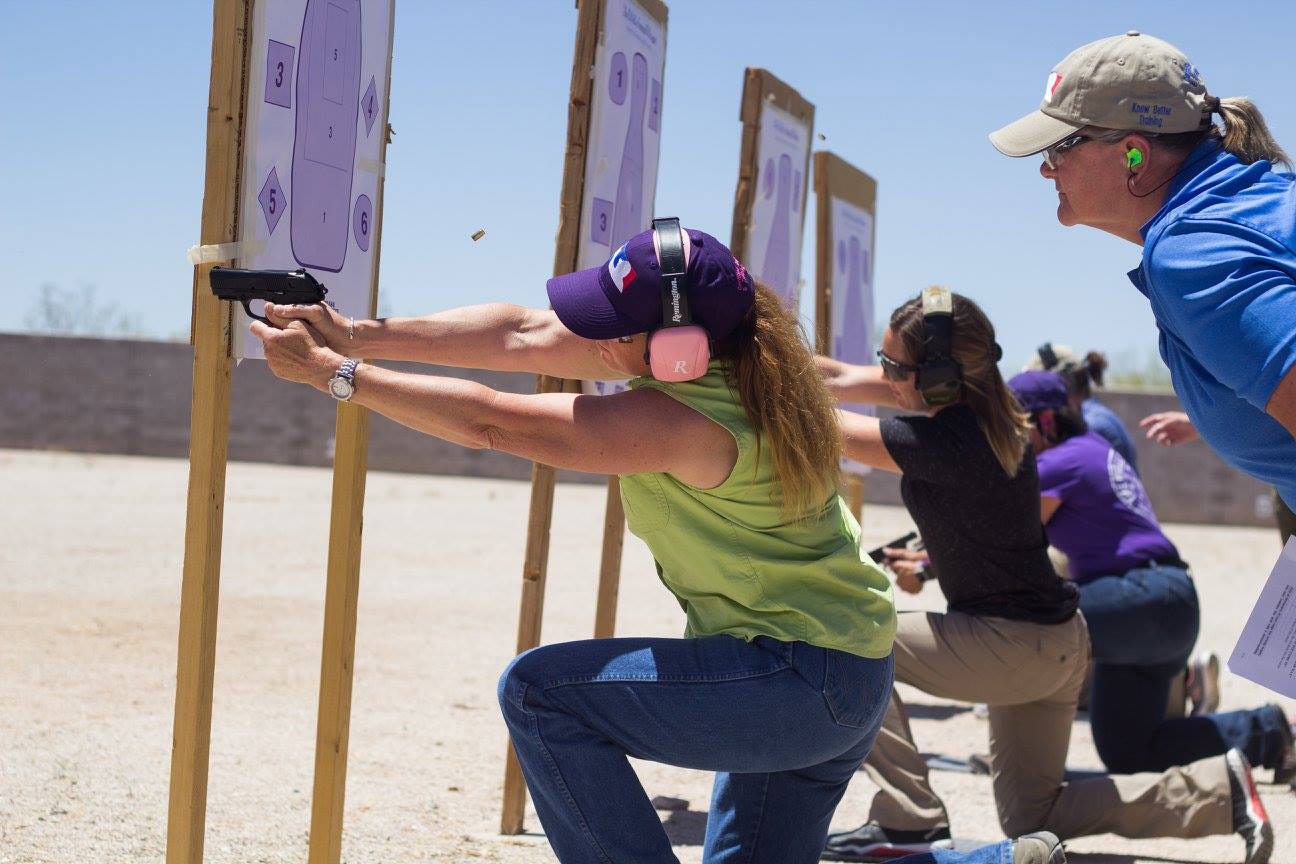
The Imperative of Preparedness and Vision for America's Future
The vision of America's future depends on our actions today. It's imperative that we address these challenges with the seriousness they deserve, ensuring that the principles of liberty and democracy continue to thrive. If we, as a nation, fail to heed this call and neglect to undertake the necessary measures for coordinated civil defense preparation, the consequences could be (in my assessment WILL BE) dire.
Conclusion: A Call to Action - The Urgency of Now
Make no mistake: our survival as a nation is contingent upon our ability to confront these challenges head-on, with resolve and determination. There is a gross misconception that 100 million well-armed patriots and vets will be able to easily handle what is coming, and NOTHING could be further from the truth. Anything short of a HIGHLY coordinated national effort by ALL red municipalities, counties, regions, and states will not be a match for the never-before-seen Black Swan events that AI War Gaming Strategists are predicting with the same scary accuracy as all events predicted to date.
The time for action is now, and the stakes could not be higher. As we stand on the precipice of uncertainty, let us not falter in our commitment to safeguarding the ideals that define us as a nation. For if we do not rise to the occasion, the America we know and love may cease to exist altogether.
Public Readiness for Civil Defense Training
Recent surveys have shed light on the public's attitude towards civil defense training. A notable 64.5% of respondents affirmed that participating in such training is their civic duty, with an additional 7.5% willing to participate, albeit reluctantly. This demonstrates a commendable level of commitment to national preparedness among citizens.
Furthermore, 70.6% indicated they would engage in civil defense preparation if their local mayor made the request. This readiness to act is crucial, as it reflects a community's resilience and its ability to come together in times of need.
While these figures are promising, it's essential to recognize that not everyone is able to participate due to age, disability, or other factors. However, the overall sentiment remains clear: there is a strong public inclination towards taking proactive steps to ensure the safety and security of our communities through civil defense training. ---
Understanding the Gravity of Black Swan Events
Polls indicate a significant concern among experts and the public about the potential for unforeseen, high-impact events—known as Black Swan events—that could pose serious threats to national security. Such scenarios, underscore the importance of robust civil defense systems to mitigate risks and protect citizens. While the likelihood of these events may vary based on real-time actions and reactions, the potential consequences are deemed severe enough to warrant proactive measures.
The Role of Civil Defense in Mitigating Unforeseen Threats
The possibility of extreme events, as highlighted by field operatives and experts, brings to light the critical role of civil defense in our national preparedness strategy. It's not about fear-mongering but about recognizing the value of being prepared for any contingency. Proactive measures and training can empower communities to respond effectively to a range of emergencies, ensuring the safety and stability of our nation.
A Unified Approach to National Safety
In light of these concerns, it's evident that a unified approach to civil defense is more necessary than ever. By fostering a culture of preparedness and resilience, we can better protect our nation from both known and unknown challenges that lie ahead. ---
Global Perspectives on Civil Defense Training (CDT)
Around the world, numerous countries recognize the importance of civil defense training as a key component of national security. Many countries, including Japan, China, South Korea, Israel, Taiwan, Singapore, and Saudi Arabia, actively conduct CDT. These nations understand that preparedness is not just a policy but a crucial aspect of national resilience.
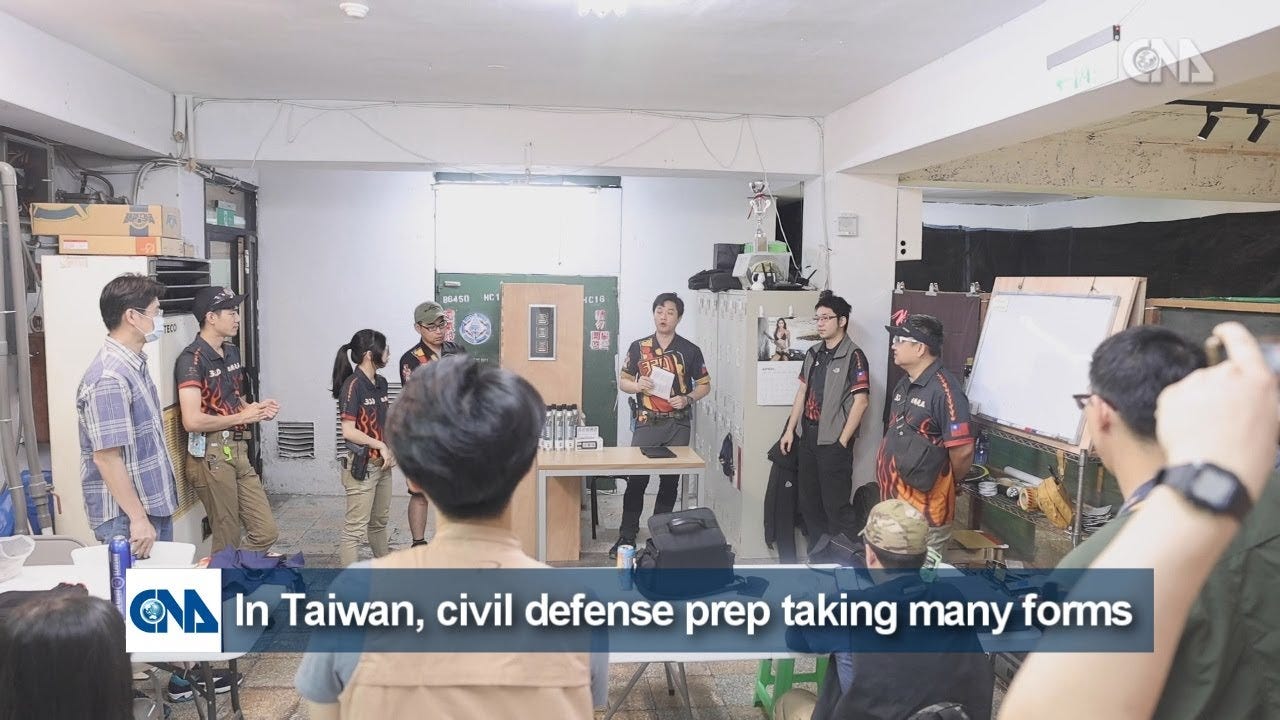
At a time when America faces unprecedented threats, the absence of a comprehensive CDT program is a glaring oversight. The question arises: why, at the most dangerous time in American history, even surpassing the dangers to the U.S. mainland during WW1 and WW2, has America not prioritized CDT and preparation?
The historical context is telling. On November 28, 1993, the Director of FEMA, James Lee Witt, ended the country’s Civil Defense and national mobilization programs. Decades later, in November of 2017, FEMA Administrator Brock Long testified before the United States House of Representatives Committee on Appropriations, Subcommittee on Homeland Security. He highlighted a concerning truth by stating, “we do not have a culture of preparedness in this country.” [FEMA, 2017]
By examining the approaches of other nations that take CDT seriously, we can learn valuable lessons about the effectiveness of preparedness initiatives and how they contribute to a nation's resilience. If America fails to prioritize CDT and preparation immediately, the consequences will, in my opinion and that of other experts, absolutely be dire. It is imperative that we look to these global examples and take immediate action to foster a culture of preparedness that can withstand the challenges of our time.
Conclusion: From Silver Screen to National Strategy
The survey responses and global perspectives on civil defense training have painted a picture of a nation at a crossroads, with the public showing a readiness to engage in preparedness that reflects our commitment to community, safety, and democratic values. This spirit of resilience is a silver lining in these turbulent times and a testament to the strength and unity that define us as a nation.
As we navigate the complexities of the current political landscape, the importance of vigilance and collective preparedness cannot be overstated. The call to civil defense is about more than responding to immediate threats—it's about fortifying the foundations of our society for the future.
In closing, "Civil War" the movie has not only sparked our exploration into the themes of conflict and societal resilience but also serves as a poignant reminder of fiction's power to reflect and amplify real-world concerns. As we look to the lessons learned from other nations with comprehensive CDT programs, let us move forward with a clear vision and a united purpose, ready to protect and serve our nation with the same resolve that has guided us through our storied past.
Stay tuned for upcoming articles where we will dive deeper into civil defense training, offering practical advice and insights. 👍 Together, we can turn the lessons gleaned from the silver screen into actionable strategies that fortify our nation against any adversity. Remember, the true strength of a society lies not in its ability to wage war, but in its capacity to prevent it through unity, vigilance, and preparedness.
“Thank you for taking the time to read 'CIVIL WAR The Movie: Was It More Than A Movie!?' We hope you found the insights both enlightening and thought-provoking. Your support is what drives our continued exploration of important topics. If you haven't subscribed or followed us yet, please consider doing so—it only takes a moment and is a powerful way to show your support. As Elon Musk reminds us, 'The Price of freedom is not cheap,' and by subscribing free or pledging to your favorite accounts on Substack, you help ensure that independent voices like ours can continue to thrive. Join us on our journey and become part of the conversation today!” - The Safron Sisters 👇
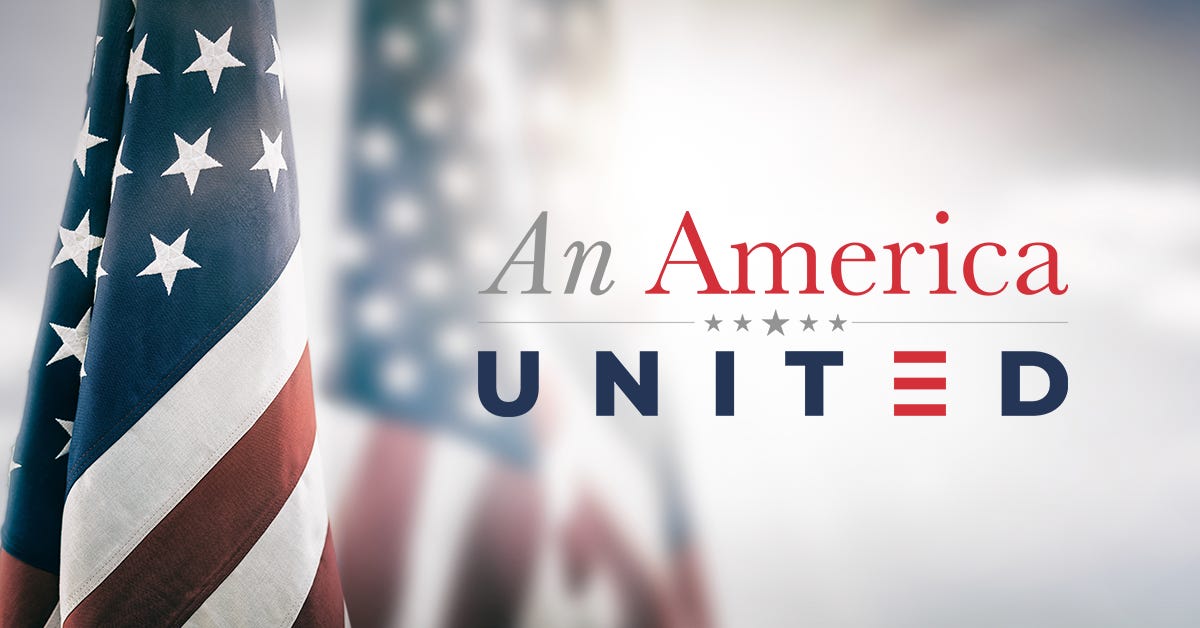
👇
Join Us on Our Journey: Subscribe Today!
But this isn't just about us—it's about you, too. We want to hear from our readers, to know what topics resonate with you, what issues you're passionate about, and what stories you want to see told. Whether you're interested in politics, pop culture, technology, or anything in between, we're here to provide content that speaks to you.
If you're seeking a platform where you can engage in thought-provoking discussions, share your opinions freely, and become part of a community that feels like family, then look no further. 👉 Subscribe FREE or pledge support to ‘Sunrise to Sunset’ today and embark on this thrilling journey of exploration and discovery.
👉 Together, let's illuminate the world from sunrise to sunset and beyond.
👉Join us now, and let's make each day brighter together.
Please Share this post if you enjoyed it:
For a limited time, seize our '3 for 1' offer.
Subscribe to STS and get complimentary access to Unite To Save America And Her Allies Journal & Build A Better World. Enjoy full access to three publications with our best benefits for just $5/month—our way of saying thanks for joining us on this journey. With no extra cost, you have the freedom to tailor your subscription: select one, combine two, or dive into all three. It's your inbox, your choice.
“...just want to thank you for sharing ...
It gives me hope that there are young people like you that are leading such an important cause.
Thank you, Denise D”





